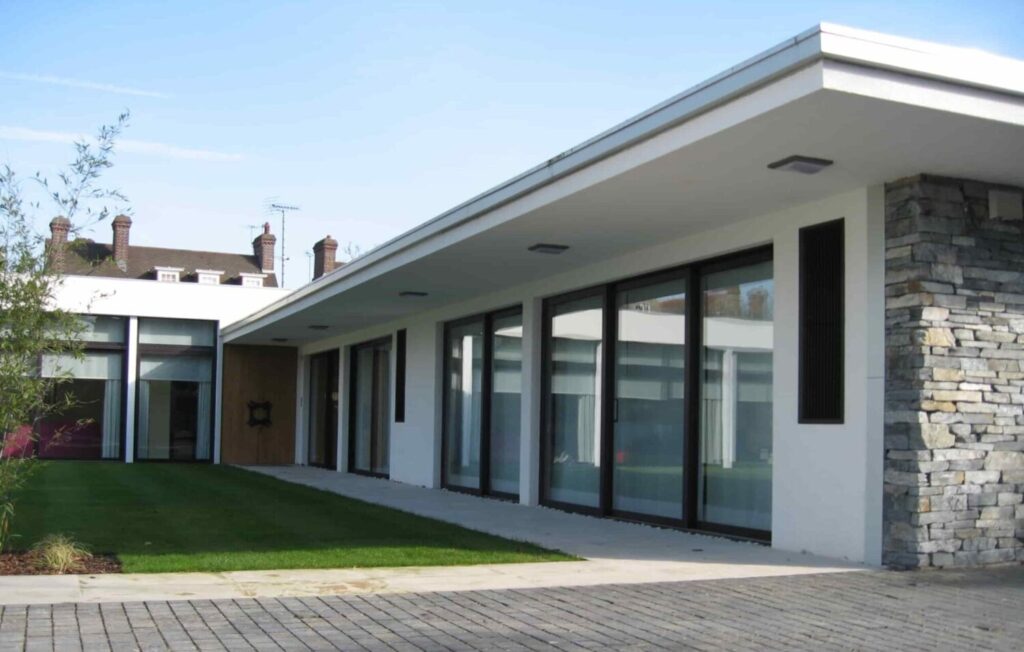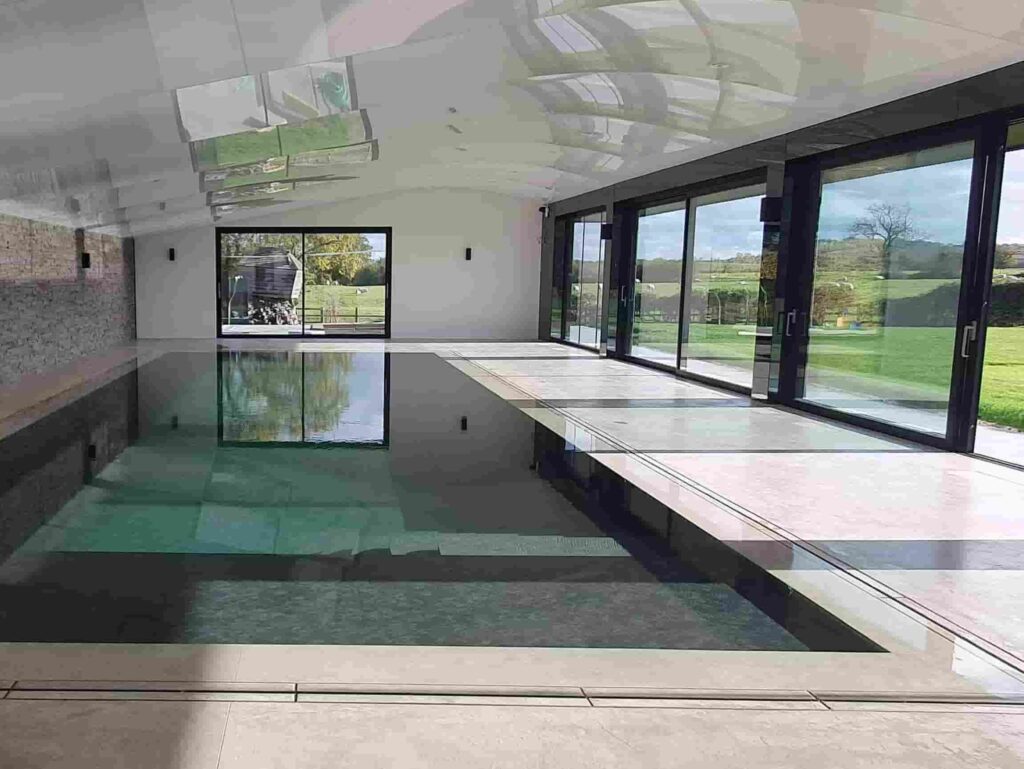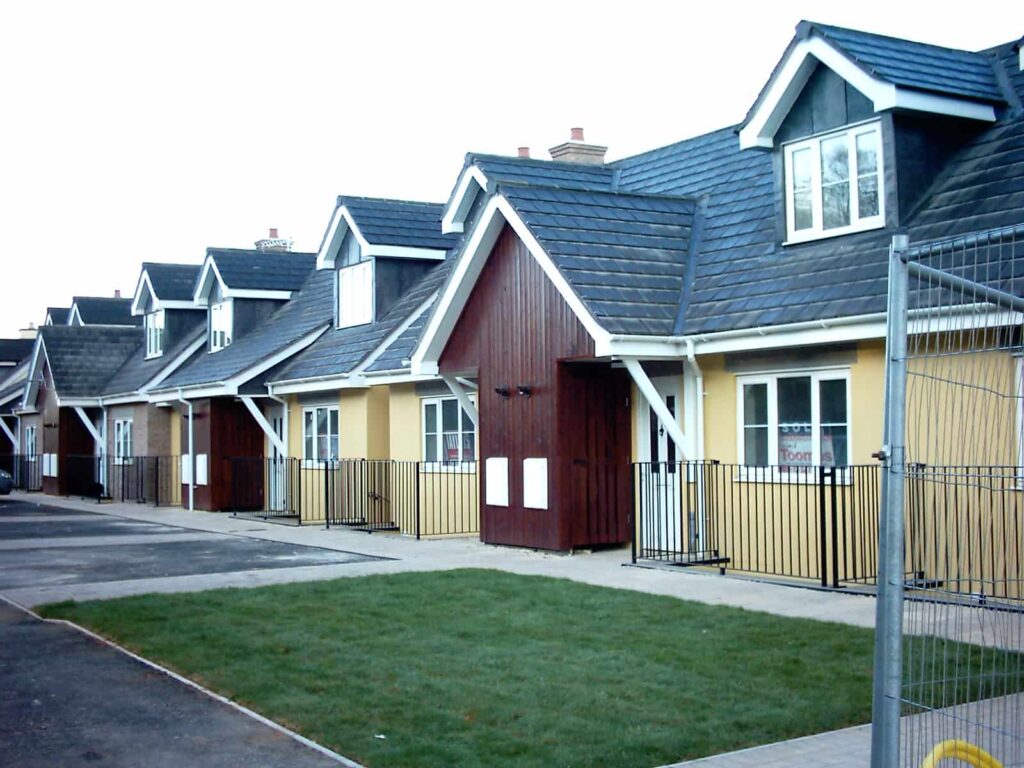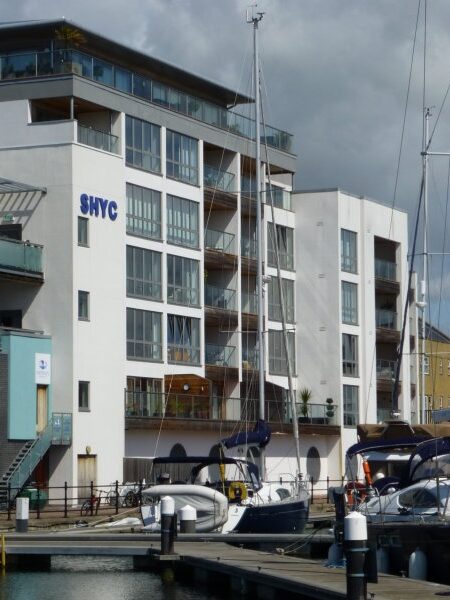ICF or Timber Frame Construction?
Timber Frame house kits or oak framed houses have become increasingly popular in the UK. This has happened as a result of its apparent build speed and sustainability compared to traditional construction methods. Timber Frame House Kits now account for approximately 23% of new build homes in the UK.
But, will the growth of the last 20 years continue? And how long do timber frames last?
Timber Frame House Kits
Timber frame construction is a method that uses a frame of large wooden members to form the structural skeleton of a building. It is built in a factory, rather than on-site and has considerable disadvantages that need to be considered prior to planning.
In the UK, timber frame house kits have become increasingly popular with self builders looking to reduce their overall budget costs. But how long do timber frames last and what are the associated costs to long term property value?
Oak Framed Houses
Many people love the appearance of oak framed houses but are horrified at the price. The high cost is a function of the volume of oak in the kits and you cannot see most of it because it is hidden behind weather boarding or internal plasterboard lining.
With an ICF building you can have the best of both worlds by getting oak trusses made that are all exposed to view and support the roof, with walls of ICF that provide all its many advantages as shown in this pool hall being built
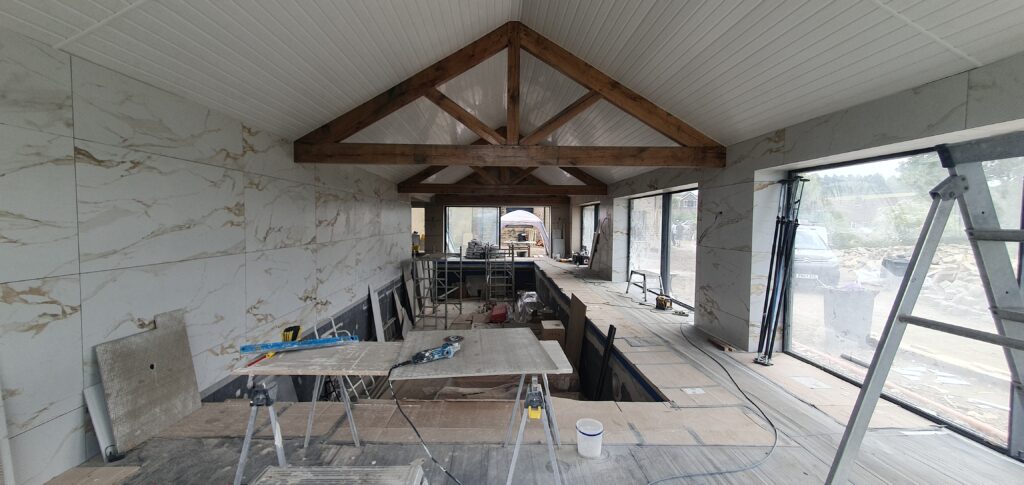
Let’s get your project approved and ICF ready!
Review our different design services in more detail and see how we can help get your project off the ground and built to the highest standard.
A few important differences between ICF & Timber Frame
Skilled Labour
Timber Frame construction is 100% reliant on very skilled workers. If corners are cut and the craftsmen haven’t been through a UK apprenticeship, (as is common today in the UK) then the quality of the finished product can be severely impacted.
Longevity
Timber frame house kits are put together in a factory but need to be assembled by skilled joiners on site. When site changes are made to suit individual homeowner requirements the timber cuts leave exposed non-treated areas of the frame in a plastic membrane that actually holds water inside it if there is a leak from a gutter.
No one knows how long the estates using timber frame construction will last and whether mortgages will be available on a timber framed house on an estate where there have been recent structural failures.
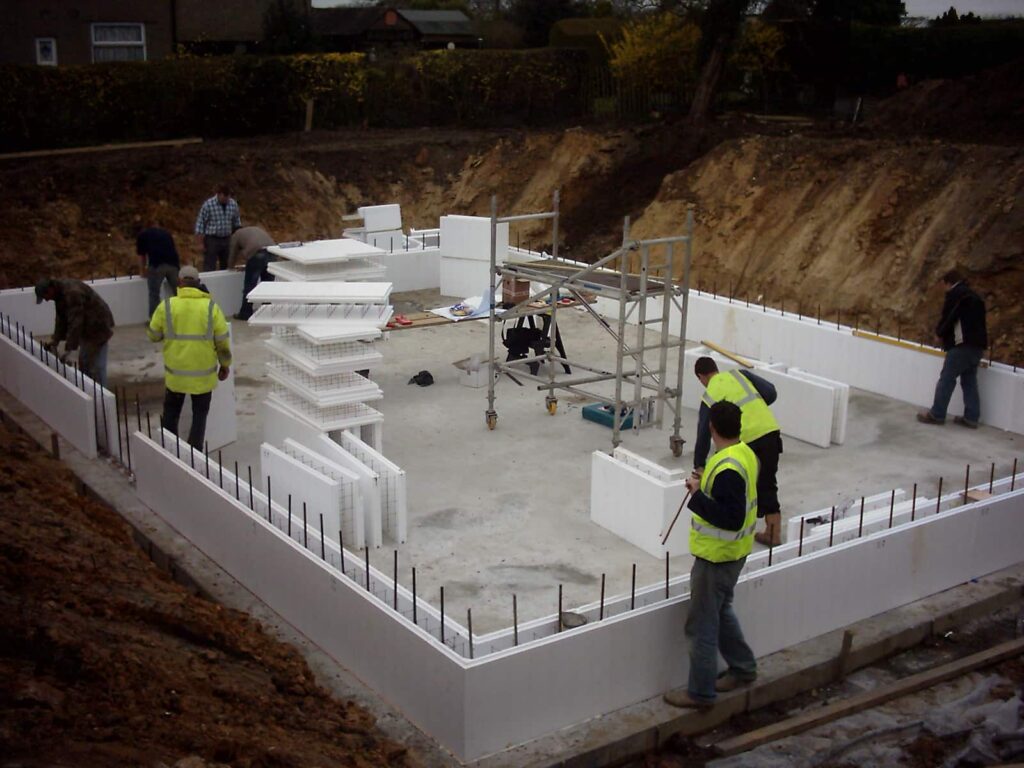
ICF Compared
In comparison, ICF homes can be built by any workers who go through a short training course. ICF construction is a process where a large box is built with EPS panels held together by steel or plastic webs and then filled with concrete.
All the potential problems must be resolved by the designer and if the box leaks concrete then the builder has to put it right immediately. The only long term problem that has occurred in ICF homes in the UK over the past 30 years has been leaks around windows caused by poorly designed flashings. This is normally an issue that can be resolved by caulking or even new windows but will never require the home to be demolished as any water damage will be limited.
Explore the diverse projects possible with ICF and discover how it can elevate your build’s quality and efficiency.
Problems With Timber Frame Construction
Safety
Design ISSUES
Long-Term Value
Time Saving?
COMFORT

Modern Methods of Construction
MMC’s like ICF Construction embrace advanced technologies that aim to achieve highly efficient and sustainable buildings.
Indeed, ICF forms simultaneously create the indestructible building framework and high insulation.
